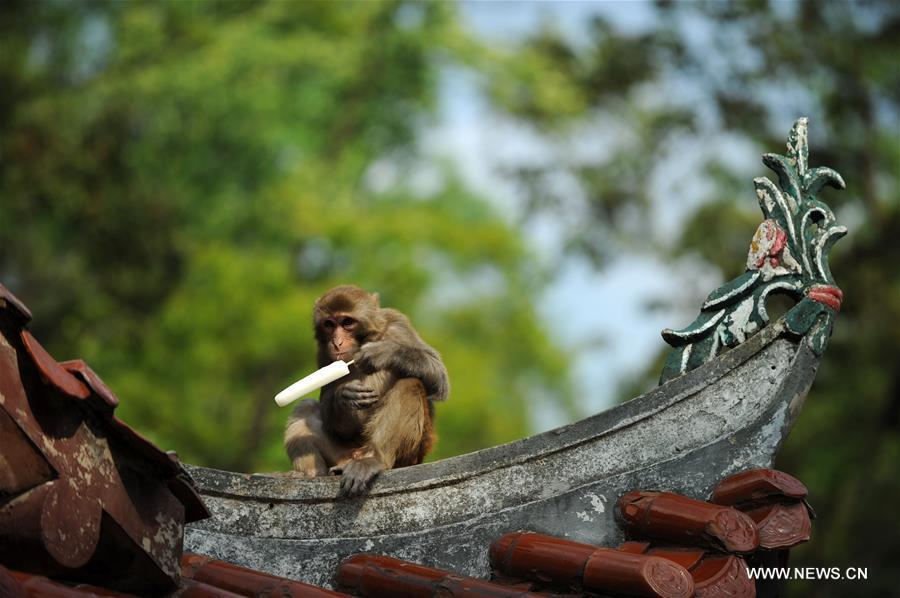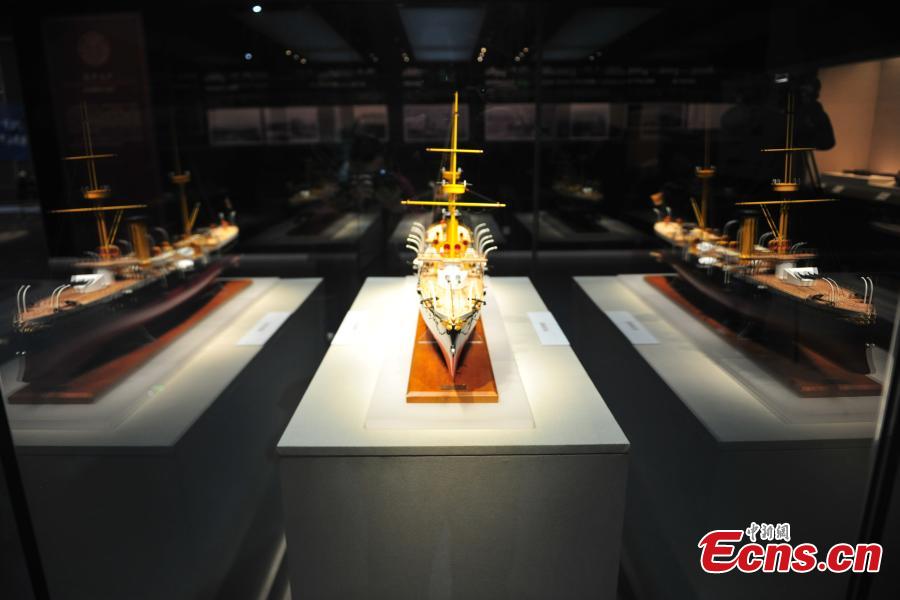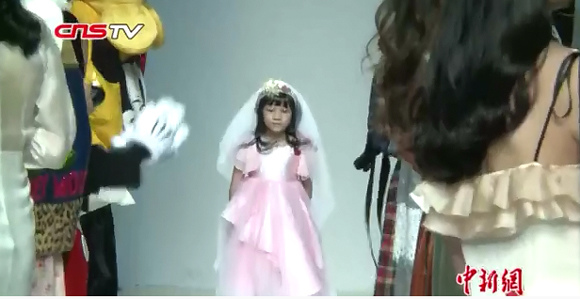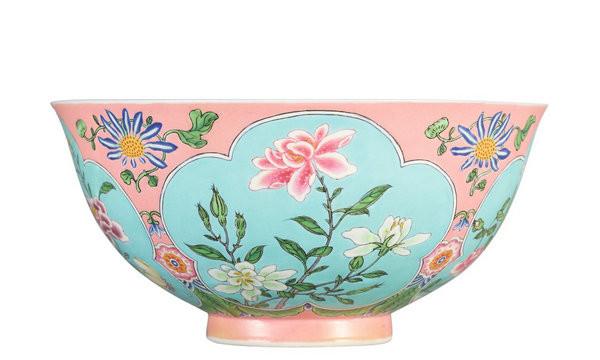
An 18th-century falangcai, or enameled porcelain bowl to be auctioned in Hong Kong. (Photo provided to China Daily)
The three consecutive emperors of Qing Dynasty (1644-1911), Kangxi, his son Yongzheng and grandson Qianlong, were known as keen art patrons and connoisseurs who through decades built an imperial assemblage of immensity in categories and sophistication in quality. Objects that they once personally appreciated often trigger bidding races when they appear at auctions now.
Two such works of art dating to the 18th century will be auctioned on April 3 in Hong Kong.
One is an falangcai, or enameled porcelain bowl produced at imperial workshops, under the watchful eyes of Emperor Kangxi, in the late 1710s and early 1720s.
It will go under the hammer during Sotheby's major spring sales.
Fanglangcai refers to the porcelain items made using the enameling technique imported from the West in the 17th century. Nicolas Chow, the chairman of Sotheby's Asia, tells China Daily that "falangcai objects represent the last major development in the long and rich history of Chinese ceramics in China".
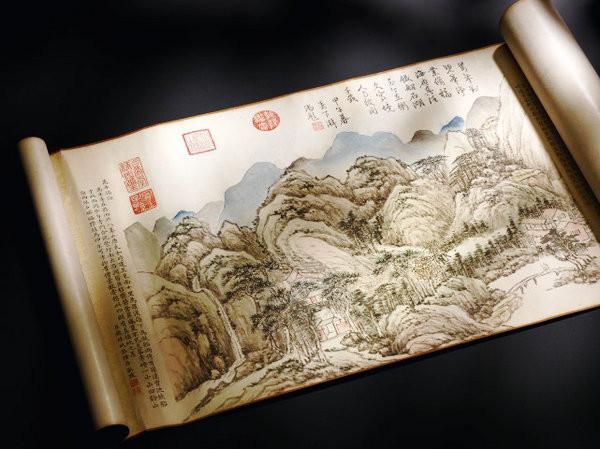
Sotheby's Hong Kong will auction a scroll of 10 mountain-and-water landscapes by 18th-century painter Qian Weicheng. (Photo provided to China Daily)
The bowl to be sold features a rarely-seen soft pink ground, on which various floral kinds were painted on four five-lobed, azure panels.
Few bowls with the similar pastel pink and turquoise grounds are found in existence.
Chow says a closely related example decorated with identical colored grounds is now housed at the Palace Museum in Taipei, but it is painted with a different combination of floral sprays.
He says the two bowls would have been painted using the very same batch of subtly shaded colors, and it was nearly impossible to replicate at a later time.
The bowl to be auctioned also shows Emperor Kangxi's keen interest in Western knowledge and techniques so much that he established enameling workshops inside the Forbidden City. He wanted the first-hand observations of artisans experimenting with the technical procedures, even though the undertaking would not only generate noise, smells and dirt but also pose fire risks.
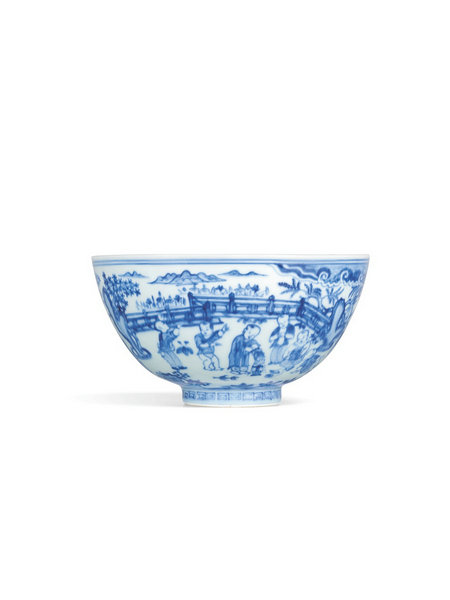
A rare blue and white 'Boys' bowl. (Photo provided to China Daily)
The bowl was first fired plain at the imperial factories in Jingdezhen, hailed as the "porcelain capital" in East China's Jiangxi province. It was then carted off to the court workshops in Beijing for the second stage of processing, enameling and firing to completion.
Chows says the choice of floral patterns suggests a possibility that the bowl was painted by Christian missionaries, who at the time served in the court and spread Western knowledge of science and art.
According to Chow, the combination of daffodils with roses, hibiscus and buttercups, Turk's cap lilies and poppies on the bowl exhibits more of a Western flair, while a classical Chinese manner favors flowers with auspicious implications, and they should be arranged in the order of seasons.
The bowl to be auctioned has been transited among major collectors.
It has been kept for 30 years by the Idemitsu Museum of Arts in Tokyo, which was built in the 1960s to house and display the collection of Japanese petroleum entrepreneur Sazo Idemitsu (1885-1981).

Before entering Idemitsu Museum's storage, the bowl once belonged to Henry M. Knight. Chow says Knight was a discerning collector who from the 1930s assembled a major collection of Chinese ceramics and other works of art. (Photo provided to China Daily)
He says Knight focused mainly on porcelains of the Ming (1368-1644) and Qing dynasties; he bought largely from the London-based antique firm Bluett & Sons, including the bowl which he acquired in 1938 and owned until his death in 1971.
Roger Bluett (1925-2000), an influential antique dealer whose grandfather co-founded Bluett & Sons, once estimated that Knight accumulated perhaps the "best" collection of 18th-century porcelain items in Europe.
Bluett wrote that Knight "was fond of telling how it was my late father who told him to buy 'Chinese taste' porcelains. Their time would come, my father used to say, and how right he was."
Another heirloom in the formal collection of Qing court is a scroll comprised of 10 mountain-and-water ink paintings by Qian Weicheng (1720-72), a high-ranking official during Qianlong's reign and also, a favorite painter of the emperor.

The colored scroll, titled Ten Auspicious Landscapes of Mount Taishan, is now in a private European collection and will also be auctioned by Sotheby's Hong Kong. (Photo provided to China Daily)
It depicts in each section a different view of the Tiantai Mountain in East China's Zhejiang province. Qian once served as the education commissioner in Zhejiang.
It boasts a varied brushwork and a mellow color scheme, according to Steven Zuo, head of Sotheby's classical Chinese paintings department.
He says people can see "the passion and dedication invested by Qian" in the scroll.
Qian presented the scroll as a gift to Emperor Qianlong, who himself appreciated classical ink paintings and Qian's artistic attainment, and who wrote on each landscape a poem.








